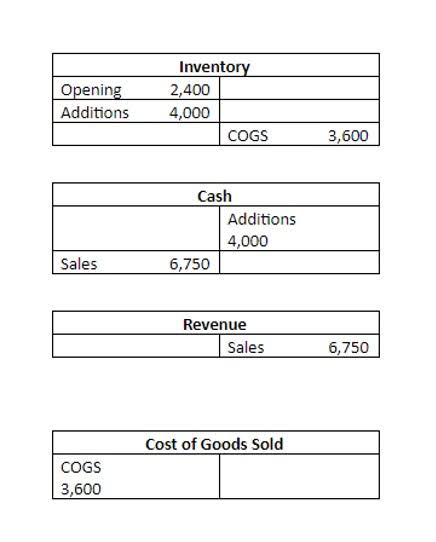
This systematic approach in drafting balance sheets not only streamlines financial reporting but also instills confidence in the integrity of the data presented. As someone who’s always had a knack for breaking down complex concepts, I’ve discovered that mastering the Normal Balance of Accounts is a game-changer for anyone delving into the world of finance. Whether you’re a budding entrepreneur, a finance student, or just someone interested https://www.bookstime.com/articles/different-types-of-accounting in accounting for beginners, understanding the Normal Balance of Accounts in financial accounting basics is crucial. With its intuitive interface and powerful functionality, Try using Brixx to stay on top of your finances and manage your growth.
- A big change will make it difficult to compare accounting record between these years.
- In accounting, it is essential to understand the normal balance of an account to correctly record and track financial transactions.
- For example, if a company has $100 in Accounts Receivable and $50 in Accounts Receivable Offset (a contra asset account), then the net amount reported on the Balance Sheet would be $50.
- They show a credit normal balance for retained earnings because they are part of equity.
- The first part of knowing what to debit and what to credit in accounting is knowing the Normal Balance of each type of account.
Financial and Managerial Accounting

He has been the CFO or controller of both small and medium sized companies and has run small businesses of his own. He has been a manager and an auditor with Deloitte, a big 4 accountancy firm, and holds a degree from Loughborough University. Debit simply means on the left side of the equation, whereas credit means on the right hand side of the equation as summarized in the table below.

Understanding the Normal Balance of Accounts
- Under the accrual basis of accounting the account Supplies Expense reports the amount of supplies that were used during the time interval indicated in the heading of the income statement.
- In accounting, debits and credits are the fundamental building blocks in a double-entry accounting system.
- Understanding this is important for showing their value on the balance sheet.
- He has worked as an accountant and consultant for more than 25 years and has built financial models for all types of industries.
- While the normal balance of a liability account or equity account is a debit balance.
- Interest earned by a bank is considered to be part of operating revenues.
This equilibrium is pivotal for financial accounting and the Normal Balance of Accounts. Maintaining this delicate equilibrium is the goal for anyone responsible for preparing financial records, following the principles of the Normal Balance of Accounts. By incorporating these ledger entry guidelines into your daily accounting practices, you create a rigorous financial narrative. After establishing a firm understanding of normal account balances, as elucidated in the Normal Balance of Accounts Guide, their utility in financial analysis is undeniable. This chart is useful as a quick reference to determine whether an increase or decrease in a particular type of account should be recorded as a debit or a credit.
to understand.

Changes – It’s inevitable that you will need to add accounts to your chart in the future, but don’t drastically change the numbering structure and total number of accounts in the future. A big change will make it difficult to compare accounting record between these years. Each account type (Assets, Liabilities, Equity, Revenue, Expenses) is assigned a Normal Balance based on where it falls in the Accounting Equation.
- For instance, when a business buys a piece of equipment, it would debit the Equipment account.
- After you have identified the two or more accounts involved in a business transaction, you must debit at least one account and credit at least one account.
- For example net sales is gross sales minus the sales returns, the sales allowances, and the sales discounts.
- Asset accounts show what a company owns and control, and increases in these accounts suggest a stronger financial position.
- Keeping transactions consistent is crucial for trustworthy financial reporting and analysis.
Examples of Debits and Credits in a Sole Proprietorship

Each payment made reduces this liability with a debit entry, potentially affecting the company’s cash flow percentage. New purchases or services contracted increase the credit side, thus altering the company’s financial obligations and impacting its operational budget. Knowing the normal balances of accounts is pivotal for recording transactions https://www.instagram.com/bookstime_inc correctly.

- Understanding and maintaining the accounting equation is more than a practice; it’s a responsibility that every financial professional bears.
- The account is debited when expenses are incurred and credited when payments are made.
- When you make a debit entry to a liability or equity account, it decreases the account balance.
- This balance represents the owners’ residual interest in the company’s assets, which would theoretically be available after settling all liabilities.
- This situation could possibly occur with an overpayment to a supplier or an error in recording.
So, if a company takes out a loan, it would credit the Loan Payable account. One of the fundamental principles in accounting is the concept of a ‘Normal Balance‘. Whether normal balance of accounts list you’re an entrepreneur or a seasoned business owner, understanding the normal balance of accounts is crucial to keeping your business’s financial health in check.

Leave a Reply
Want to join the discussion?Feel free to contribute!